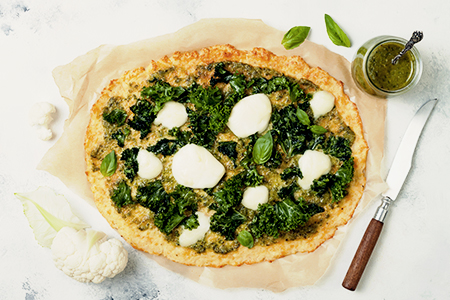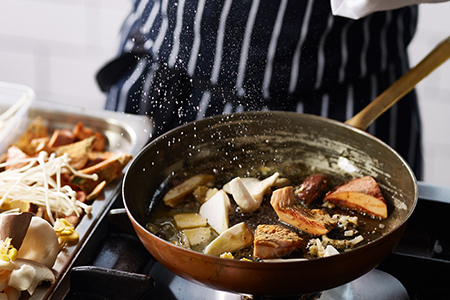Trends
Share Plates: lighter meals trending this Spring
With the winter months coming to an end, it’s time to turn your attention to the Spring menu, traditionally a time of reinvigoration. To find out what will be trending this season, we spoke to Fresca Executive Chef Mark Normoyle from Anchor Food Professionals.

KEY INSIGHTS
- Leaner, lighter meals are coming back on the menu
- Share plates are set to make a resurgence, utilising fresh seasonal produce
- Spring is the perfect time to add more fresh seafood to the menu
- When ingredients supplies are limited, take advantage of the specials board to promote smaller-run menu items
With the winter months coming to an end, it’s time to turn your attention to the Spring menu, traditionally a time of reinvigoration. To find out what will be trending this season, we spoke to Fresca Executive Chef Mark Normoyle from Anchor Food Professionals.
“Before we even think about ingredients, it’s important that we’re looking towards more leaner, lighter style dishes on the menu,” Mark advises. “Arancini balls are on trend at the moment, so you might add some Mozzarella and Herb Arancini, which you could serve with a beautiful green salad and Parmesan dressing, or a Spinach Pide – these can be served as entrees or mains and are great examples of lighter style dishes, as opposed to the heavier, meat-based meals of the colder months.”
When it comes to meats, Mark recommends going for leaner cuts, such as lean grilled Angus steak or lamb. Spring also brings its share of fresh seasonal produce, such as asparagus, tomatoes and broad beans. Corn is also at its peak in Spring, as is that Italian cuisine staple ingredient eggplant.
“All these products make for an authentic Mediterranean cuisine style on the menu,” Mark points out.
With lighter meals predominating on the menu, it’s not surprising that share plates are set to make a resurgence in the coming months. “Entrees aren’t as popular as they used to be, but having multiple share dishes is definitely on trend, and it’s lovely way to eat – your customers get to try several dishes rather than just being confined to a single main course,” Mark explains. “It’s great for your kitchen as well, because it’s just one share plate in the middle of the table, which means less prep and less cleaning up, and you can feature eyecatching colours and fantastic flavours – making the presentation as memorable as the food itself.”
Mark makes the point that when you’re preparing your share plates, it’s important to ensure an even spread of ingredients. “If you’re doing a broccolini share dish for four, you need to have even amounts of broccolini so each person can have the same. This applies to the garnish as well – and in the arancini example I mentioned earlier, again there needs to be at least one arancini ball per person, so a minimum of four per share plate if you’re saying it feeds four people.”
Spring is also the perfect time to add more fresh seafood to the menu, which is not only plentiful in Australia but is also a key component of Mediterranean food. “Seafood is great because it’s so simple to cook – you can grill some beautiful fish in olive oil and serve with lemon juice and a simple salad, and it’s easy to prepare so you can really focus on making the execution excellent. I recommend keeping it fresh and light, not too many heavy-based sauces. Again presentation is imperative because you can highlight the beautiful bright colours of your salad ingredients and they really stand out when complemented with light grilled fish.”
Mark says the key to sourcing the best seafood is your local market and having a good relationship with your provedore or supplier. “If you can’t get to the market yourself, don’t specify what you want but instead ask your supplier what’s really good right now and what’s competitively priced, as they will know.”
He also recommends utilising the best of local seasonal produce even when supply is limited. “The specials board is a great way to highlight these smaller-run menu items – once they’re gone they’re gone, although you can use any excess stock in the kitchen by combining it with existing ingredients you might have on hand, and that gives the chef a chance for creativity as well. It also incentivises the front of house team as the chef might have 20 different portions of something he wants to sell, so he’ll give the staff a taste and explain the dish to them so they know how to sell it on to the customer.
“The important point to remember about specials and seasonality is that specials need to actually be special – not just something pulled off the menu that you want to highlight, but a dish that your customers can tell the chef has put some extra thought and effort into. That’s what will encourage them to give it a go.”
YOU MAY ALSO LIKE



